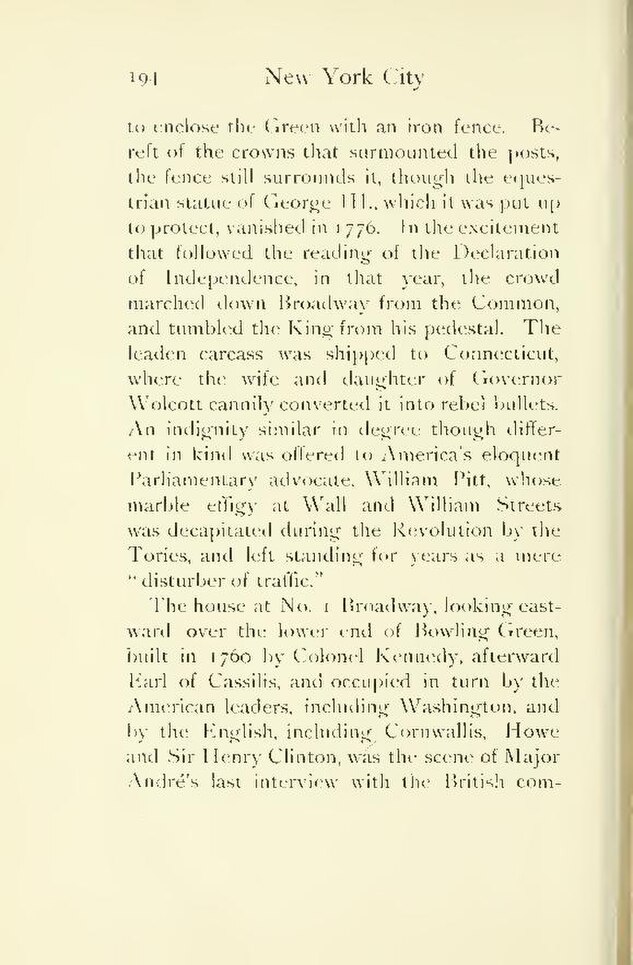to enclose the Green with an iron fence. Bereft of the crowns that surmounted the posts, the fence still surrounds it, though the equestrian statue of George III., which it was put up to protect, vanished in 1776. In the excitement that followed the reading of the Declaration of Independence, in that year, the crowd marched down Broadway from the Common, and tumbled the King from his pedestal. The leaden carcass was shipped to Connecticut, where the wife and daughter of Governor Wolcott cannily converted it into rebel bullets. An indignity similar in degree though different in kind was offered to America's eloquent Parliamentary advocate, William Pitt, whose marble effigy at Wall and William Streets was decapitated during the Revolution by the Tories, and left standing for years as a mere "disturber of traffic."
The house at No. 1 Broadway, looking eastward over the lower end of Bowling Green, built in 1760 by Colonel Kennedy, afterward Earl of Cassilis, and occupied in turn by the American leaders, including Washington, and by the English, including Cornwallis, Howe and Sir Henry Clinton, was the scene of Major André's last interview with the British com-
